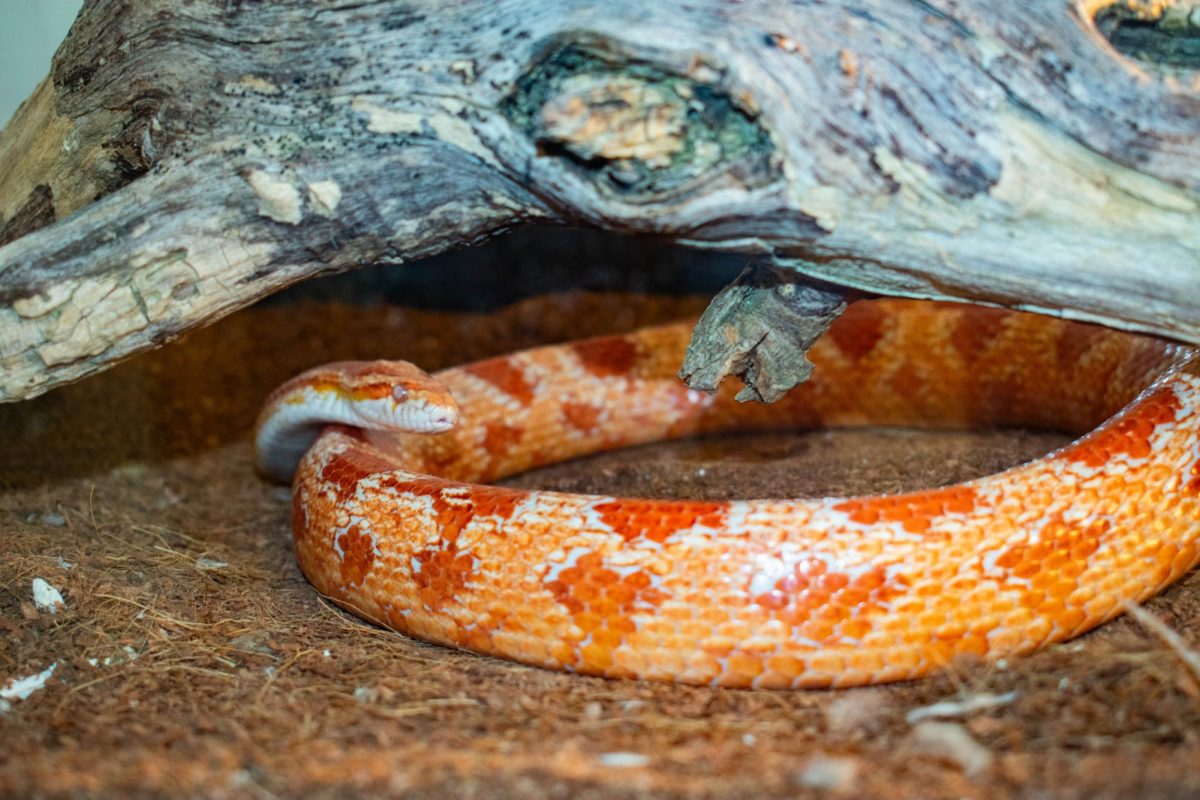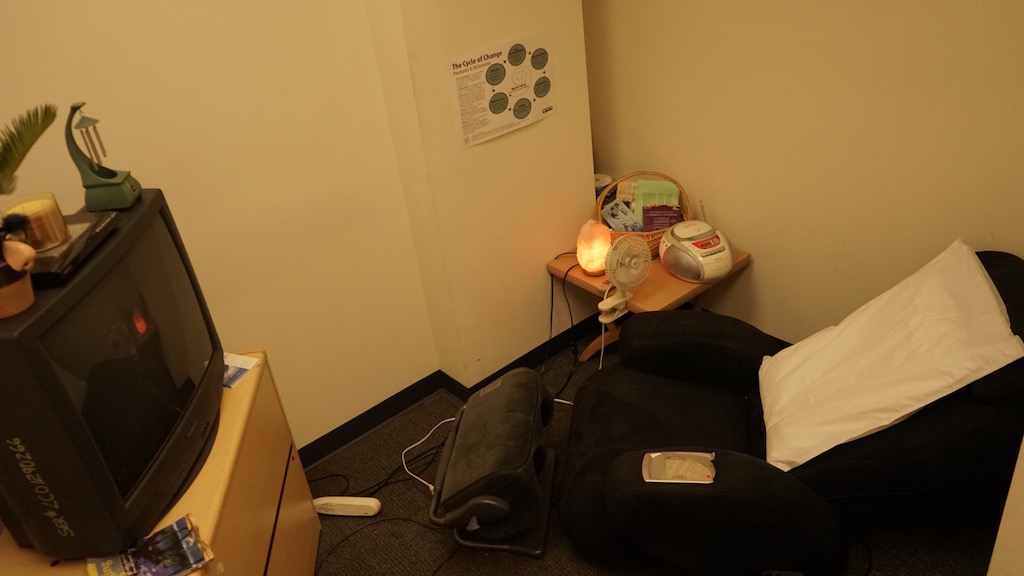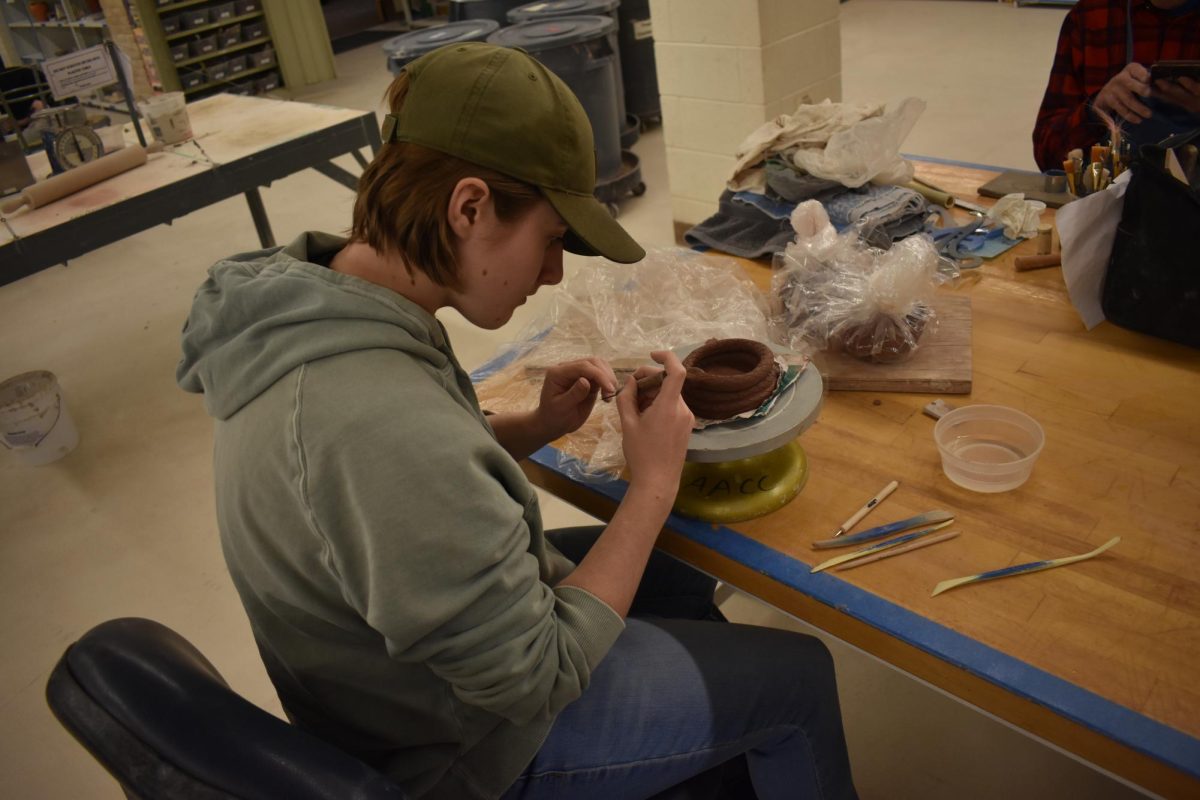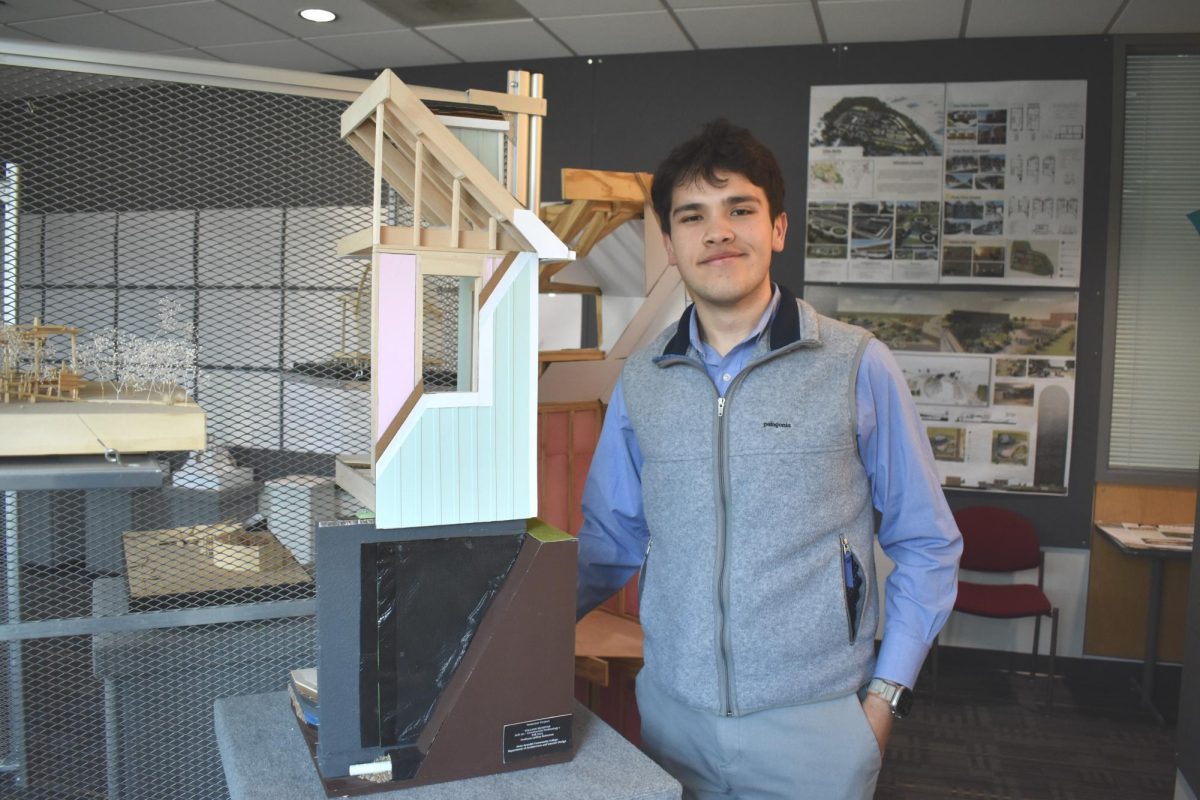The Health and Life Sciences Building is home to a snake named March.
In Room 105, students can find March, a 16-year-old corn snake. March serves as a live example in some zoology classes, according to professor Benjamin Weibell.
“As we talk about the principles of science of animals in zoology, [students] get to see these real examples in the classroom,” Weibell said. “That makes a difference because they can ask good questions based on their own observations.”
According to Weibell, a former student donated March to the classroom in 2008. March has a history of escaping, having slithered away from its container twice within that year.
“When it was small, we were in the Dragun building and it escaped. … The janitors found [March] at one point and they put it in some kind of container to try and cage it up,” Weibell said. “But … by the time I got there in the morning … [March] escaped again.”
Nobody saw March for the next few months, according to Weibell.
“One of the janitors noticed [March] crawling in one of the gardens outside the Dragun building … so then we caught it … and then from that point [March] never escaped again,” Weibell said.
Weibell said the snake hasn’t been “officially sexed” but “looks like a male based on tail length.”
Isabella Whalen, a second-year nursing student, is the snake’s primary caretaker.
Whalen said she feeds March dead mice once every two weeks and takes it on walks—she carries the snake as she walks around HLSB.
Whalen said March is “very docile” and has never hurt anybody.
AACC houses orange snake
Room 105 in the Health and Life Sciences Building houses a 16-year-old corn snake named March.
Divine Mesumbe, Associate Editor
August 26, 2024
0
More to Discover















